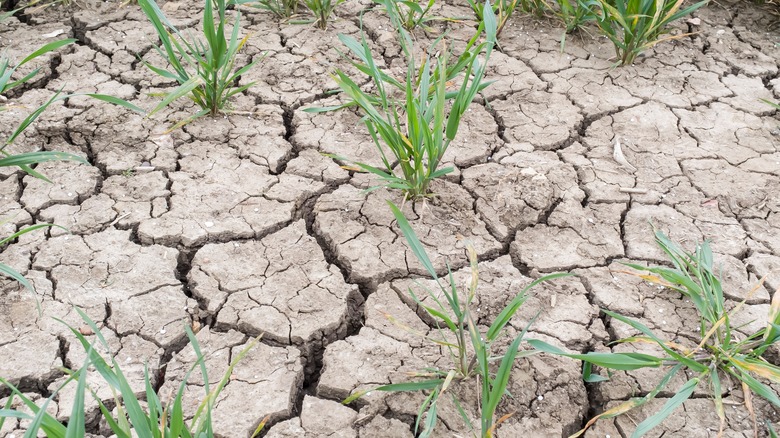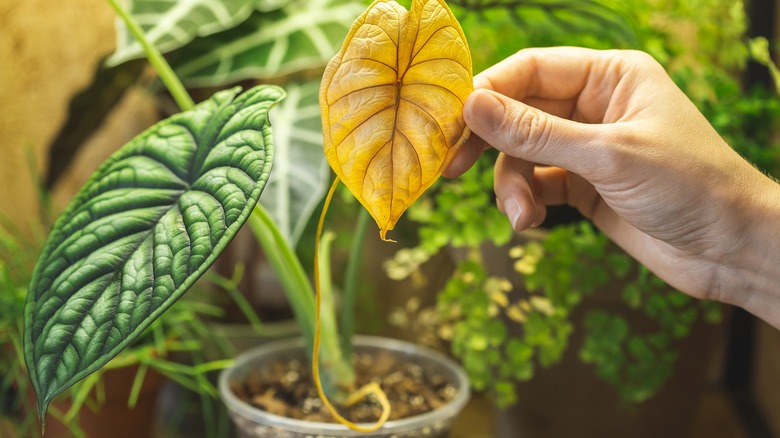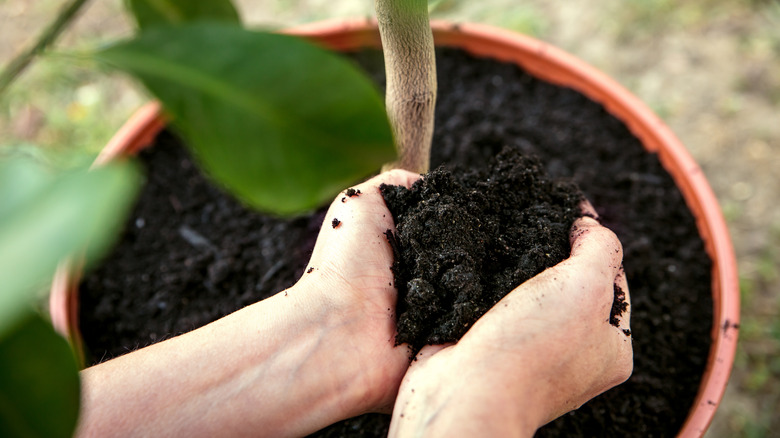What Is Bleached Soil And How Does It Affect Your Potted Plants?
Just like you would look at the color of a plant's leaves, the color of the soil can also tell you whether its environment is conducive to its well-being. Specifically, you need to make sure the potting soil doesn't become bleached. In other words, bleached soil refers to a gradual change where it starts turning a lighter shade on the surface almost to the point of looking tan or white. That means it's short on necessary organic substances and nutrients, like iron and manganese which your plant needs to thrive.
One underlying cause is that the material that nourishes the plants has been swept away by the recurring process of watering and draining. Another factor that brings about the bleaching of the soil relates to its environment. Consequently, bleached soil most often occurs in dry, warm conditions that prompt the need for frequent watering which leads to a decrease in vitamins and minerals. If you're worried about bleached soil or have faced it before, here's how it affects your plant's health and what you can do to improve the soil's quality.
How does bleached soil affect plants?
Bleached soil does some heavy damage to a plant. In fact, you might see its effects on the visible parts first, but the roots have suffered as well. When you notice that the leaves gradually fade to a yellowish tinge, and the plant is not growing like it used to, you can guess that it's not getting enough nutrients.
Also, the stem might start to droop a little, and if your plant is a flowering variety, then fewer blooms will appear over time. When you combine those symptoms with dirt that's a lighter shade than what it used to be, you can guess that it needs some revamping. The soil could lack enough nitrogen, potassium, and phosphorus to sustain your plant in addition to the previously mentioned nutrients.
Moreover, bleached soil, when not addressed, becomes harder and more compacted. This results in poor drainage which then leads to root rot. Plus, this condition doesn't allow for proper airflow throughout the soil and definitely leaves little room for the roots to spread out.
What to do about bleached soil
Ultimately, does having bleached soil mean that you have to repot the plant? That depends on how well your plant responds to positive changes in the soil — and fortunately, you can take steps toward refreshing the soil and adding to its nutritional value.
You can start by adding compost while loosening the soil just a bit. This not only provides a natural way of adding organic matter but also improves the soil's ability to retain moisture. Plus, the action of gently turning and loosening the soil helps with drainage and air circulation to the roots. Also, you can add some peat moss and a small amount of plant feed but do so in gradual increments while paying close attention to any changes in your soil's color.
On a similar note, you can mix up new potting soil with the existing one. However, you might not see changes right away, so it's important to wait for some time (though not too much). Ideally, the soil should return to a dark brown or black color. If your plants don't respond to the soil amendments, you might try repotting them in a new, fresh mix.


